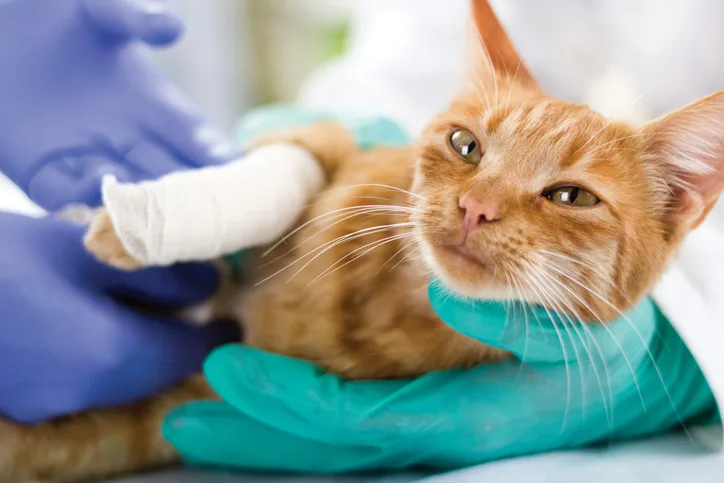
In the Literature
Gregory CW, Davros AM, Cockrell DM, Hall KE. Evaluation of outcome associated with feline trauma: a Veterinary Committee on Trauma registry study. J Vet Emerg Crit Care (San Antonio). 2023;33(2):201-207. doi:10.1111/vec.13277
The Research …
A previous study using data from the Veterinary Committee on Trauma registry found cats were less likely to survive trauma than dogs (82.5% vs 92%).1
This retrospective study sought to further evaluate feline cases in the trauma registry to determine whether survival rates and severity of injury differ in cats that sustain blunt trauma, penetrating trauma, or a combination of both and report differences between treatment and diagnostics in these cases.
A total of 3,895 cats were included; 2,240 cats (58%) had blunt trauma, 1,365 (35%) had penetrating trauma, and 290 (7.4%) had both blunt and penetrating trauma. Blunt trauma was typically due to falling or being hit by a car, and penetrating trauma resulted most commonly from bite wounds. Eighty-three percent of all cats survived to discharge. Survival incidence was 90% in cats with penetrating wounds, 80% in cats with blunt trauma, and 68% in cats with both blunt and penetrating trauma.
Based on the animal trauma triage (ATT) scoring system, 65% of all cats had mild injuries (ATT score, ≤2). Cats with both blunt and penetrating trauma had the largest proportion of severe injuries (26%), and those with only penetrating injuries had the lowest proportion of severe injuries (6%). The modified Glasgow Coma Scale (mGCS) was used to evaluate head trauma. Most cats (77%) had a normal mGCS. Cats with both blunt and penetrating trauma had the highest incidence (13%) of low mGCS (≤13) consistent with severe injury.
Abdominal focused assessment with sonography for trauma (aFAST) was used in 27% of cats, and thoracic focused assessment with sonography for trauma (tFAST) was used in 25% of cats. More cats with blunt trauma (35%) or both blunt and penetrating trauma (29%) underwent aFAST compared with cats with penetrating trauma (14%). Similarly, more cats with blunt (33%) or both blunt and penetrating trauma (27%) underwent tFAST than cats with penetrating trauma (13%). Regardless of trauma type, >90% of evaluated cats were negative for abdominal effusion, had a normal lung glide sign consistent with normal lungs, and lacked pleural effusion.
Treatment differed statistically among trauma types, with 42% of cats with both blunt and penetrating trauma admitted to a hospital compared with 38% of cats with blunt trauma and 22% of cats with penetrating trauma. Cats with penetrating trauma (40%) and both blunt and penetrating trauma (39%) were most likely to undergo surgery, and cats with blunt trauma (27%) were least likely to need surgery.
… The Takeaways
Key pearls to put into practice:
This study provides population data regarding frequency and type of trauma sustained by cats. Although these data are useful in describing feline trauma, they are not applicable to individual trauma cases.
Cats with penetrating trauma (eg, bite wounds) alone have a higher survival rate than those with blunt trauma (eg, falling, being hit by car) alone or both blunt and penetrating trauma.
Although overall severity of illness was low, cats with both blunt and penetrating trauma had the most severe injuries, most often required hospitalization, and, along with cats with penetrating trauma, most frequently needed surgery.
You are reading 2-Minute Takeaways, a research summary resource presented by Clinician’s Brief. Clinician’s Brief does not conduct primary research.